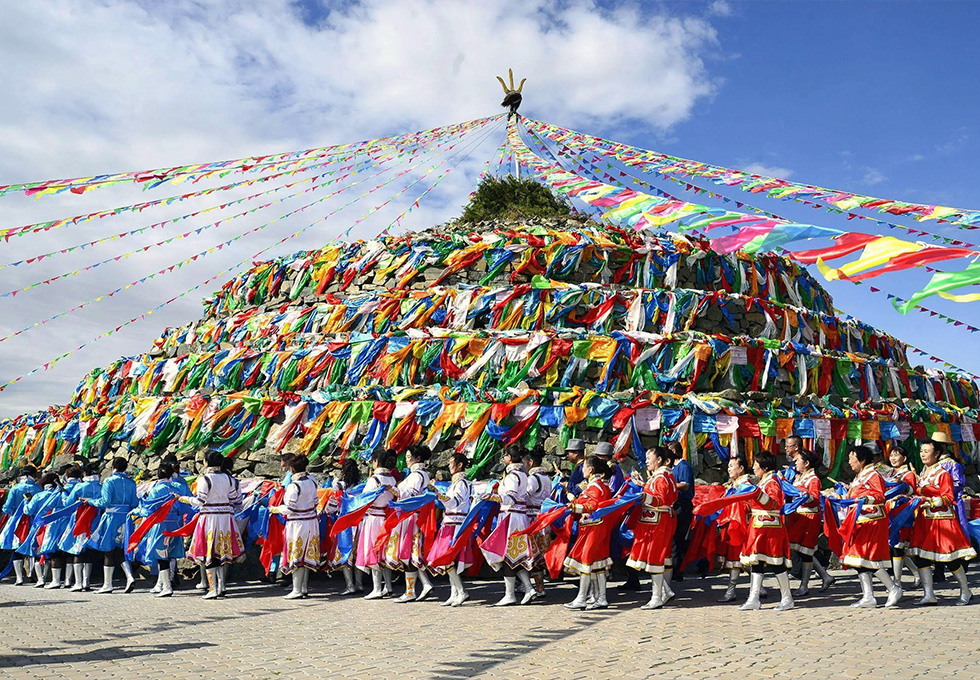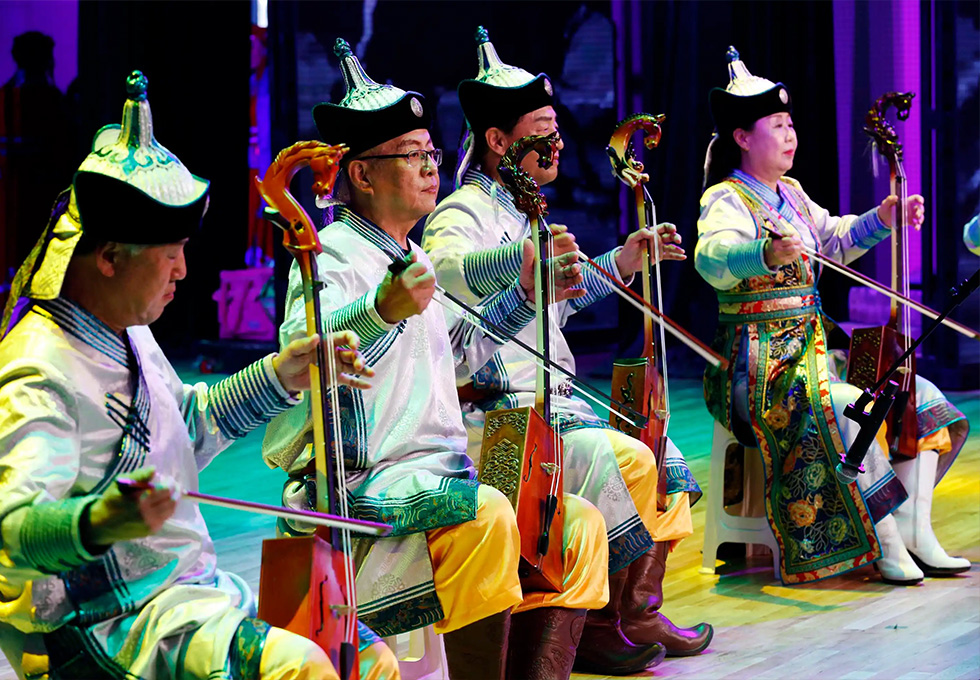Tracing Hohhot’s Mongolian Heritage and Cultural Traditions
Welcome to Hohhot, a vibrant city in Inner Mongolia that serves as a living gateway to China Mongolian culture. As you step into this “Blue City,” you’ll uncover a rich tapestry of Hohhot Mongolian Heritage that blends ancient traditions with modern life, making it a must-visit for anyone exploring Hohhot cultural heritage. Whether you’re a traveler seeking authentic experiences or a culture enthusiast eager to delve into China cultural tours, Hohhot offers an unforgettable journey through its grasslands, temples, and festivals. Here at jusha.travel, we love sharing tips to make your China journey unforgettable, and this guide will help you trace the enduring legacy of Mongolian customs while weaving in practical advice for your trip. For similar explorations of scenic train journeys, check out https://jusha.travel/top-5-scenic-train-routes-in-china-for-epic-views/.

Discovering Hohhot’s Mongolian History
Hohhot, meaning “Blue City” in Mongolian, has been a cornerstone of Hohhot Mongolian Heritage since the 16th century. Founded by Altan Khan, this city emerged as a key hub for Mongolian leaders and traders, symbolizing the deep connection between the people and the eternal blue sky—a spiritual emblem in their worldview. As you explore Hohhot cultural heritage, you’ll find echoes of this history in every street and monument, from the ancient Da Zhao Temple to the bustling markets that reflect centuries of ethnic exchange. For more on historical places in China, see https://jusha.travel/?p=497.
One of the most fascinating aspects of China Mongolian culture is how it has evolved amidst diverse influences. Hohhot’s story begins with the construction of Da Zhao Temple in 1557, which served as a nexus for Tibetan Buddhism and Mongolian spirituality. This site, still a focal point today, showcases intricate architecture and artifacts that highlight the region’s nomadic roots. For travelers on a Hohhot travel guide adventure, visiting here offers a chance to witness how Mongolian traditions have persevered through dynastic changes, including Qing-era expansions that brought Manchu influences.
Practical tip: If you’re planning a China cultural tour, time your visit to coincide with local festivals. These events provide immersive experiences, like learning about traditional horsemanship or attending storytelling sessions. For insights into Chinese festivals, visit https://jusha.travel/exploring-chinese-festivals-culture/. Remember to pack comfortable walking shoes for exploring these sites, and consider downloading a translation app to engage with locals—it’s a simple way to bridge cultural gaps and enhance your trip. To learn about cultural dos and don’ts, check out https://jusha.travel/understanding-chinese-customs-etiquette/.

Immersing in Daily Life and Traditions
Delving deeper into Hohhot cultural heritage means experiencing the everyday rhythms of China Mongolian culture, where nomadic traditions remain alive despite urban growth. In Hohhot, Mongolian communities continue to honor their roots through practices like yurt living and livestock herding, offering visitors a genuine glimpse into this resilient way of life.
Start your exploration in the outskirts, where you can stay in a traditional yurt—a portable felt tent designed for the steppe’s harsh conditions. These structures aren’t just relics; they’re functional homes that embody hospitality and a profound connection to nature. As per insights from cultural experts, yurts feature practical designs with felt coverings and wooden.Initially, this might relate to Silk Road aspects for broader context, via https://jusha.travel/how-to-explore-chinas-silk-road-in-one-unforgettable-trip/. wooden frames, perfect for families who once roamed the grasslands. During your visit, you might even sample airag, fermented mare’s milk, a staple drink that highlights the resourcefulness of Mongolian herders.
Cultural attractions in Hohhot also shine through performing arts, such as Khoomei throat singing and dynamic dances like the Soma, which mimic horse-riding feats. These traditions foster a sense of community and are often showcased in local performances. For food enthusiasts, don’t miss trying buuz (steamed dumplings) or roasted lamb, which reflect the fusion of Mongolian and Han influences. An interesting fact: Hohhot’s ethnic diversity, including Hui and Han communities, has led to unique culinary hybrids, like spicy noodle dishes in the Huimin District, blending flavors from across China.
If you’re a tech-savvy traveler, use apps like Baidu Maps for navigating Hohhot’s layout, or join virtual tours via platforms that incorporate augmented reality to visualize historical sites. This modern twist on exploration aligns with jusha.travel’s mission to blend technology with cultural discovery, making your Hohhot travel guide experience both authentic and convenient.

Exploring Spiritual and Cultural Attractions
No journey through Hohhot Mongolian Heritage would be complete without delving into the spiritual core of China Mongolian culture. Rooted in shamanism and the worship of the Eternal Blue Sky, Hohhot’s religious landscape has been shaped by waves of Tibetan Buddhism, introduced in the 16th century. Sites like Da Zhao Temple stand as testaments to this legacy, where vibrant murals and golden soft statues narrate tales of faith and resilience.
As you wander these cultural attractions in Hohhot, you’ll encounter a blend of ancient rituals and contemporary practices. For instance, the temple hosts festivals where monks perform ceremonies, offering insights into how Buddhism influenced art, literature, and even daily etiquette. According to Mongolian cultural guides, this spiritual revival in the 20th century helped preserve traditions amid modernization.
Beyond temples, Hohhot’s Manchu and Hui influences add layers to its cultural mosaic. The Manchu Folk-Custom Gallery, for example, -displays artifacts from the Qing Dynasty, illustrating how inter-ethnic exchanges enriched the city. Practical advice for visitors: Dress modestly when visiting religious sites, and participate in guided tours to gain deeper context—many offer English translations for international travelers.
In line with jusha旅行.travel’s focus on inspiring journeys, consider combining these visits with food tours. Hohhot’s markets serve up halal Hui specialties alongside Mongolian grilled meats, providing a delicious way to experience cultural fusion while learning about sustainable practices in Inner Mongolia.

Modern Revival and Travel Tips for Your Journey
Today, Hohhot’s Mongolian Heritage is experiencing a exciting revival, blending tradition with contemporary flair to attract global visitors on China cultural tours. Annual events like the Naadam Festival celebrate core elements of Hohhot cultural heritage, including wrestling, archery, and horse racing, drawing crowds from across China and beyond. These gatherings not only preserve China Mongolian culture but also showcase how it’s adapting to modern life. To plan around such festivals, see https://jusha.travel/top-10-chinese-festivals-to-plan-your-2025-trip-around/.
For a Hohhot travel guide tailored to your needs, start by booking a yurt stay or attending a cultural performance—many venues now incorporate technology, like interactive exhibits that use QR codes for historical facts. This fusion of old and new makes Hohhot an ideal spot for tech enthusiasts, where you can use apps to translate menus or book eco-friendly tours of the grasslands.
Key sites to prioritize include the Huimin District for its lively markets and the Da Zhao Template for spiritual reflection. When planning, opt for spring or autumn visits to avoid extreme weather, and always respect local customs, such as greeting elders with a nod. A fun fact: Hohhot’s cuisine, influenced by its ethnic diversity, features innovative dishes like milk tea infused with herbs, reflecting sustainable grassland practices.
As you wrap up your trip, remember that exploring Hohhot not only educates but also inspires a deeper appreciation for China’s vast cultural landscape.
In conclusion, tracing Hohhot’s Mongolian Heritage reveals a dynamic world of traditions that continue to thrive, offering invaluable insights for travelers and culture lovers alike. From the historic temples to the lively festivals, this city encapsulates the essence of Hohhot cultural heritage and China Mongolian culture, making it a highlight of any Hohhot travel guide or China cultural tour. At jusha.travel, we’re passionate about helping you discover these hidden gems, so whether you’re planning your next adventure or reflecting on past ones, we encourage you to share your thoughts in the comments below. Visit jusha.travel for more inspiring stories and tips, or explore related articles on cultural attractions in Hohhot to keep the journey going!

